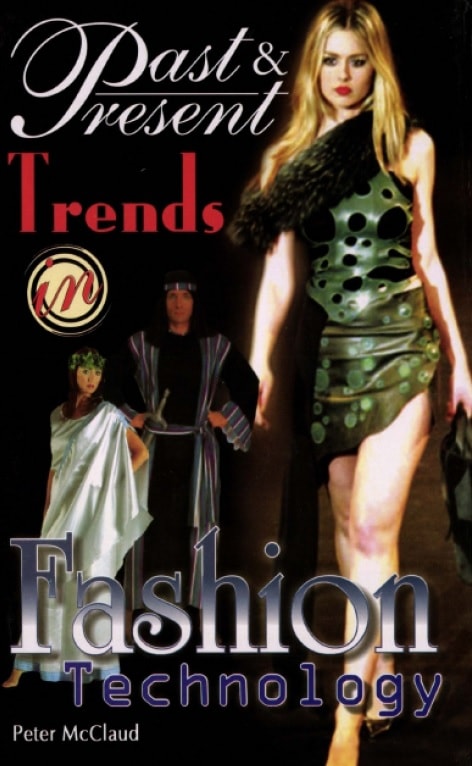
Preface:
The book in your hands presents a genuine attempt to make the reader aware of not only the current fashion trends, but takes the reader through a detailed history of fashion and how the modern day fashion evolved. Mostl); people find the glamorous world of fashion as av,·esome. Most would agree that they are fascinated by the world of fashion at some point or the another in life.
So what fashion actually is? Why are people fascinated by the world of fashion? What is it that attracts them towards it? And why are only a few able to be successful as models and designers? What’s the secret behind their success?
The book not only tries to answer all these questions but also makes the user aware of a number of aspects of the world of fashion. Even the technological aspects such as stiching and computer aided designing are presented in a logical manner in the book.
The reader will get to know tlut fashion is not limited to models and designers only, but there are other skills such as stitching, embroidery and working as a computer designer that go designing clotl1es. Who knows you might get an idea for your future profession after reading the book?
Contents
1. What is Fashion? ……………………. ………………………………… 7
2. Fashion: Past and Present .. …… ………… ………………………. 19
3. Fabrics ……… .. …………………………………………………………. 32
4. Cloths and Clothing ………………………………………………… 56
5. Stitching & Embroidery …………………………………………. 162
6. Designs & Patterns ……………… ……………. …………………. 180
7. The Future Fashion Trends & Technology ………………… 184
8. Designers & Their Contributions ………….. …. ……………. 198
What is Fashion?
The term fashion symbolises a characteristic means of expression or presentation. Fashions may follow trends, in which they gain or lose popularity.
‘Fashion’ is also a verb meaning to make into a required form. Fashions are social psychology phenomena common to many fields of human activity and thinking. Although that concept frequently applies to clothes and other aspects of appearance, it can apply also to:
• music, art, politics, philosophy,
• and even to mathematics, the choice of programming techruques,
• and also economic trends, such as those studied in behavioural finance, and soon.
Fashion exists in the intricacies of aesthetics with innovation, coupled with pleasing details.
Fashion is a style that is popular at a particular time, especially in . clothes, hair, make-up.
According to Webster’s, Fashion is ‘the make or form of something; an often personal manner or way; mode of action or operation; a prevailing custom, usage, or style; the prevailing style (as in dress) during a particular time; a garment in such a style; social standing or prominence esp. as signalized by dress or conduct’.
Fashion, in dress, is the prevailing mode affecting modifications in costume. Styles in Asia have been characterized by freedom from change, and ancient Greek and Roman dresses preserved the same flowing lines for centuries. Fashion in dress and interior decoration may be said to have originated in Europe about the 14th century New styles were set by monarchs and prominent personages and were spread by travellers, by descriptions in letters, and, in costume, by the exchange of the fashion doll. The first tashion magazine is thought to have originated c.1586 in Frankfurt, German)~ It was widely imitated, gradually superseding fashion dolls. Godey’s LadyJs Book) brought out in the United States in 1830, re.mained popular for decades. In interior decoration, the influence of designers, such as Chippendale, Sheraton, and Robert and James Adam, was apparent by the 18th century, but in cosnune, the only influential designer at that period was Rose Bertin, Milliner and dressmaker to Marie Antoinette.
In Paris-the leading arbiter of fashion since the Renaissancethe fading influence of celebrities was coincident with the rise of designer-dres~ers in the mid-19th century. Paris haute couture has remained preer’b.inent in setting fashions for women’s dress. Designers such as Charles Frederick Worth, Coco Chanel, Lucien Lelong, Elsa Schiaparelli, Cristobal Balenciaga, Christian Dior, and Yves Saint Laurent have had their fashion houses in Paris. In the latter part of the 20th century, such American designers as Norman Norell, Mainbocher, James Galanos, Bill Blass, and Pauline Trigere competed successfully with Parisian designers. London, in the early 19th century, became the centre for men’s fashions under the leadership of Regency dandies such as Beau Brummell. In the mid-1960s, London was again a centre offashion influence.
The 1970s and 80s saw the beginning of more divergent trends in fashion. This was the result of the increasing popularity of readyto- wear collections by major designers, which made fashionable people label-conscious. Ethnic-inspired looks and the punk style enjoyed a period of popularity. Successful clothing designers such as Ralph Lauren, Georgio Armani, Gianni Versace, Jean-Paul Gaultier, Rei Kawakubo, and Geoffrey Beene widened their design horizons, licensed their names, and put their distinctive marks on objects ranging from furniture to cars, fabric, and perfumes. The look of luxuriance that emerged in the 1980s was countered in the 1990s with the production of classic understated clothes. Fashions are adapted for mass production by the garment industries of New York, Los Angeles, and other cities.
